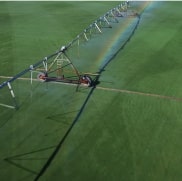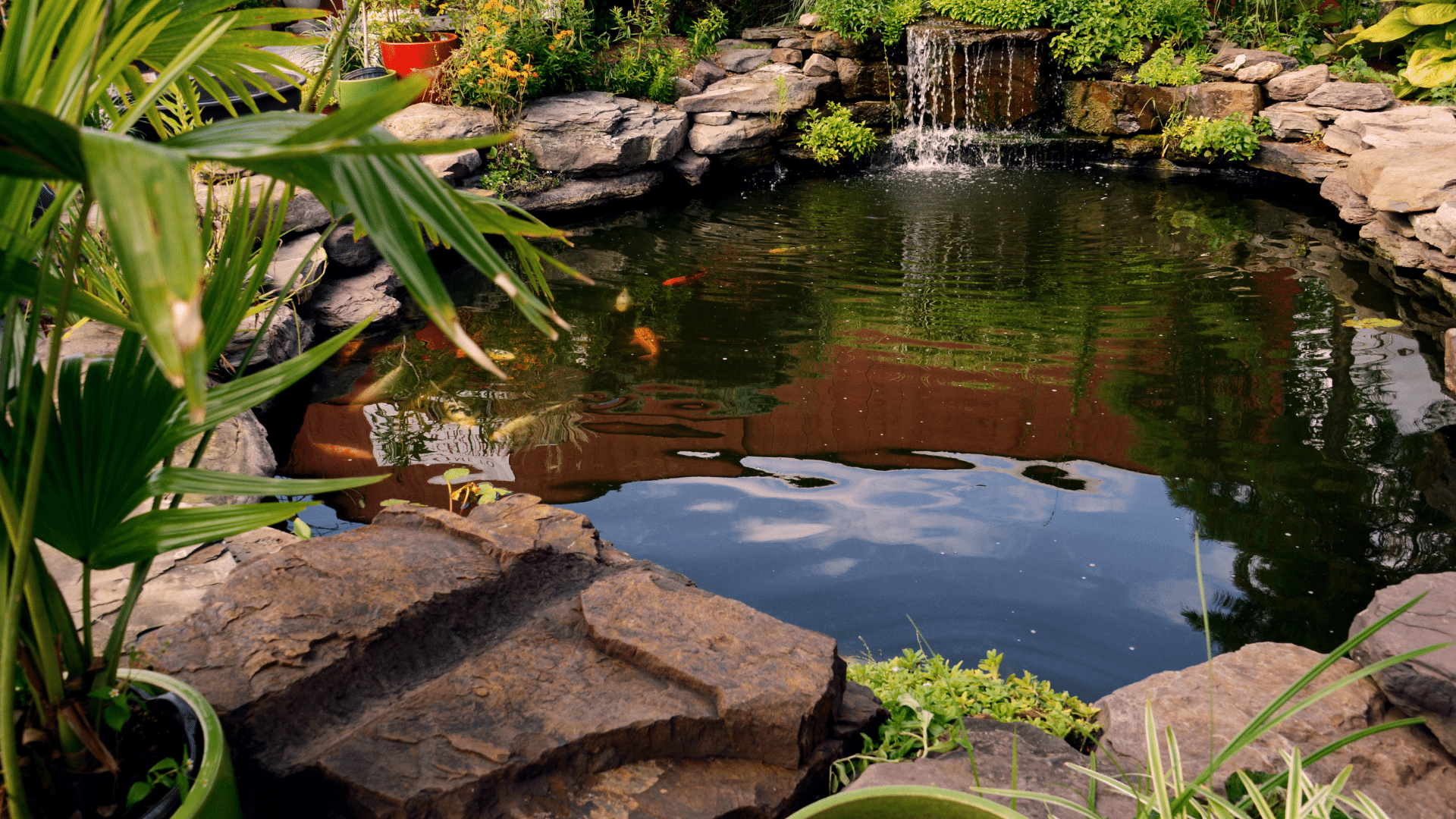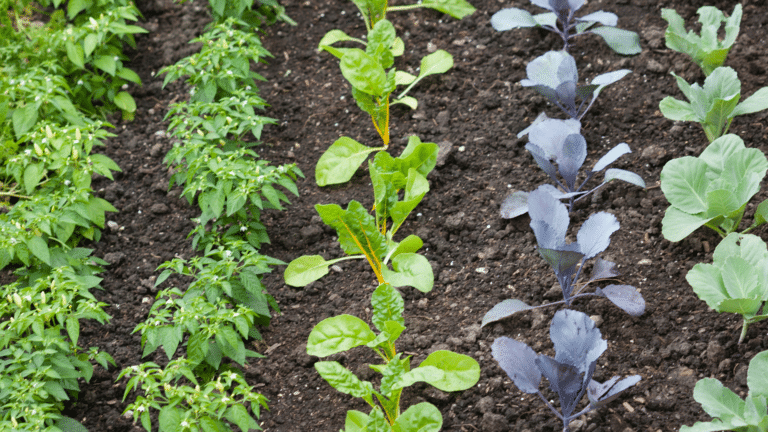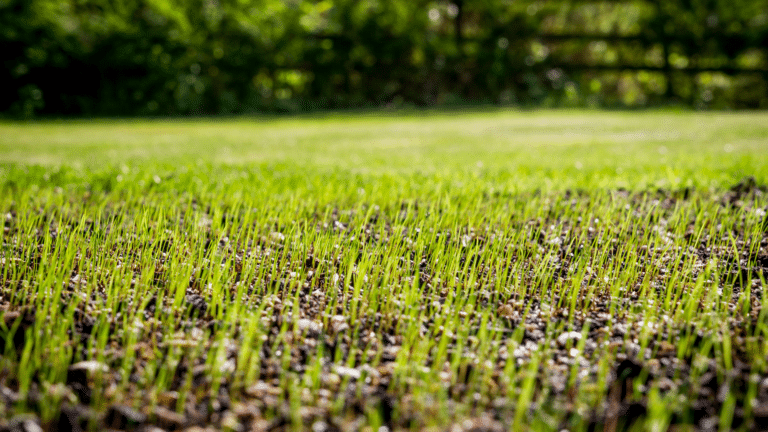1.) Avoid accumulations of fallen leaves in your pond.
Otherwise, they should be skimmed out several times weekly (although this can be hard to keep up with). Netting is available to prevent leaves from falling in. Many types of leaves, such as maple and pine needles, will produce tannic acid, which inturn can produce brown pond water and also be toxic to fish.
2.) Stop feeding plants to allow them to transition into dormancy. Tropical plants should be removed before the first frost and moved indoors, or discarded as annuals (many tropical plants are difficult to winter indoors, so don’t be discouraged if you’re not successful). Dying leaves and yellow foliage should be trimmed and removed, as the accumulation of rotting foliage may also foul your water. Hardy water lilies should be lowered to deeper water and should remain below the ice level. We have found that many hardy marginal plants can even be left up on shelves to winter. Cattails, Irises, Reeds and Horsetails have all successfully wintered in shallow water. These plants may also add winter interest to your pond, as their dying foliage and interesting flower heads continue to stand above the pond’s surface through the winter (In spring, when new growth begins to appear, simply prune away browned foliage). If you do sink your marginals, remember than hollow-stemmed plants (such as some reeds and horsetails) will rot if water gets inside cut stems. If your pond is very shallow, hardy plants may also be wintered indoors in tubs of water.
3.) Goldfish and Koi can winter outside in the pond if your water is at least 24 in. deep (30-36 in. is preferable). We even have customers that have wintered fish in shallower water with a pond de-icer, although this does require more attention during the season (this would not be recommended if you travel during the winter months). As long as water temperatures remain above 50 degrees, you can continue to feed your fish although we do recommend switching to wheat germ feeds, as these are more readily digestible in cooler water. Only feed your fish as much as they will eat in about 5 minutes to avoid uneaten food rotting and fouling your pond water. A pond thermometer can help guide you in fish feeding based on water temperatures.
4.) If you plan to do a partial water change at this time, do so before your water temperature drops below 50 degrees to avoid stress to fish.
5.) To successfully winter fish, you must keep an open hole in the ice at all times. Gases will accumulate in the water and need to escape. Oxygen should be allowed to enter through the hole. If the pond ices over completely for more than a couple of days, your fish may suffocate.
6.) As long as temperatures aren’t too cold, a hole in the ice may be kept open with just your pump. Waterfalls may freeze up quickly and should be shut off when this occurs. You can remove the tubing from your pump outlet and simply let the water shoot up and churn the water surface. However, you do want to avoid churning up the deeper water of the pond as this will cause cooling of the water. The pump can be lifted up onto a shelf, or it may be put into a bucket so that it is pulling water off the surface of the pond. This allows the deeper, bottom waters to remain calmer.
7.) When the temperature gets too cold, the pump may not be enough to maintain an open hole. At this time, disconnect the electrical cord of the pump and install a pond de-icer. The pump may be left under the water as long as it is deep enough not to freeze solid into ice, as this can crack the pump’s housing. You can also hook up a long enough piece of tubing on your pump outlet to reach out of the pond. If you ever have trouble keeping a hole open in the ice, you can plug in your pump to remove a couple of inches of water to create an air space under the ice. This will cause the ice to melt and a hole will open naturally. Under extremely frigid conditions, this can be very helpful!
8.) It’s important to remember never to pound on ice to break open a hole! Shock waves can kill your fish. If your pond should ever be completely iced over, you can thaw out a hole by continuously pouring boiling water in one spot until a hole opens.
9.) You may also winter fish indoors. If you plan to do this, choose the largest available container that you can. Water must be filtered and aerated! Move fish indoors when temperatures are the same indoors and out, to prevent shock and stress to your fish. It’s also useful to use pond water to set up your indoor tank, as this water is already balanced. If you plan to do this, it is imperative that you monitor the ammonia and nitrite counts of your water.
10.) Finally, it is necessary to break down and empty any water out of pond box filters. If water is allowed to freeze in a box filter, it may crack the box. We have found that replacement boxes are not available for most filters and a complete new box filter often becomes necessary (this could be quite an expensive mistake!).
At Lurvey Supply, we carry all the supplies you need to successfully get through the winter season. We are here year-round for advice and if you should have any questions or problems, please don’t hesitate to call us.










